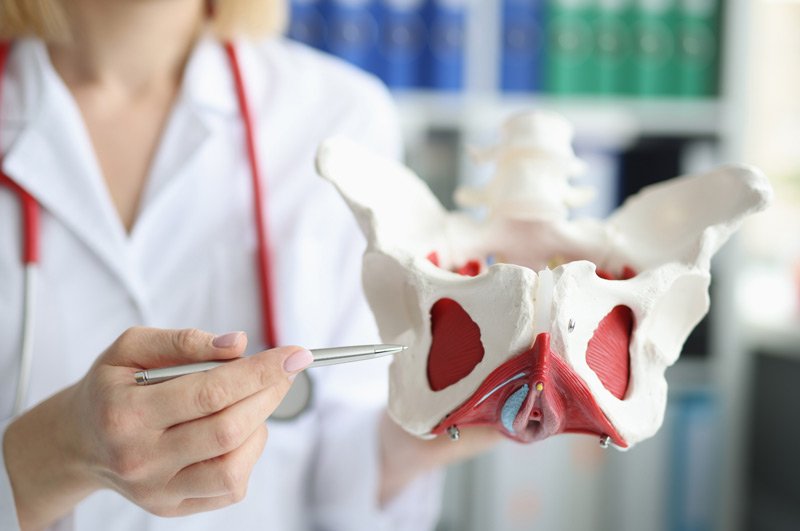Minimally invasive sacrocolpopexy is performed to treat pelvic organ prolapse, a condition resulting from the weakening of the pelvic floor. The pelvic organs, which include the vagina, intestines, cervix, uterus, bladder, urethra, and rectum, are supported by muscles and tissue. When these muscles and tissues become weakened, stretched, or torn, the pelvic organs may shift out of place or sag, leading to prolapse.
Different Types of Prolapse
Depending on the affected organ(s), patients may be diagnosed with one of the following types of pelvic organ prolapse:
- Vaginal vault prolapse: The top of the vagina descends into the vaginal canal
- Rectocele: The rectum bulges into the vagina
- Uterine prolapse: The uterus and cervix drop down into the vaginal canal
- Enterocele: The small intestine presses against the vaginal wall
- Cystocele: The bladder bulges into the vagina


Repairing Prolapse with Sacrocolpopexy
During sacrocolpopexy, the surgeon attaches surgical mesh from the vagina to the sacrum, which is the tailbone at the base of the spinal cord.
This procedure is typically done laparoscopically, during which the surgeon attaches the surgical mesh and repositions the top of the vagina or cervix. The uterus is removed, sometimes leaving the cervix intact. Some patients may also have their Fallopian tubes and/or ovaries removed. If necessary, the surgeon also repairs the bladder or rectum through the vagina to ensure adequate support. For patients with urinary incontinence, a small place of mesh may also be placed under the urethra.
The Recovery Process
Once the patient awakens, staff will conduct a voiding trial to determine if the bladder catheter can be removed before discharge. The bladder is filled with saline, and a nurse removes the catheter. If the patient can void two-thirds of the saline, they will be discharged without a catheter. If not, the catheter is replaced, and the patient is taught how to care for it. A repeat voiding trial is conducted in three to five days.

Patients must keep the incisions clean, dry, and uncovered, washing their hands before touching the incisions, changing dressings, and eating.
After surgery, patients should:
- Drink plenty of fluids
- Eat bland, low-fat foods like chicken broth, gelatin, and crackers
- Take walks to exercise calf muscles and prevent blood clots
- Avoid fatty foods to prevent nausea
Potential Side Effects and Risks
Post-surgery, patients may experience pain, gas, abdominal swelling, and shoulder pain for 24 to 72 hours due to the gas used to inflate the abdomen. Pain medication can be taken during the first 24 hours to alleviate discomfort.

